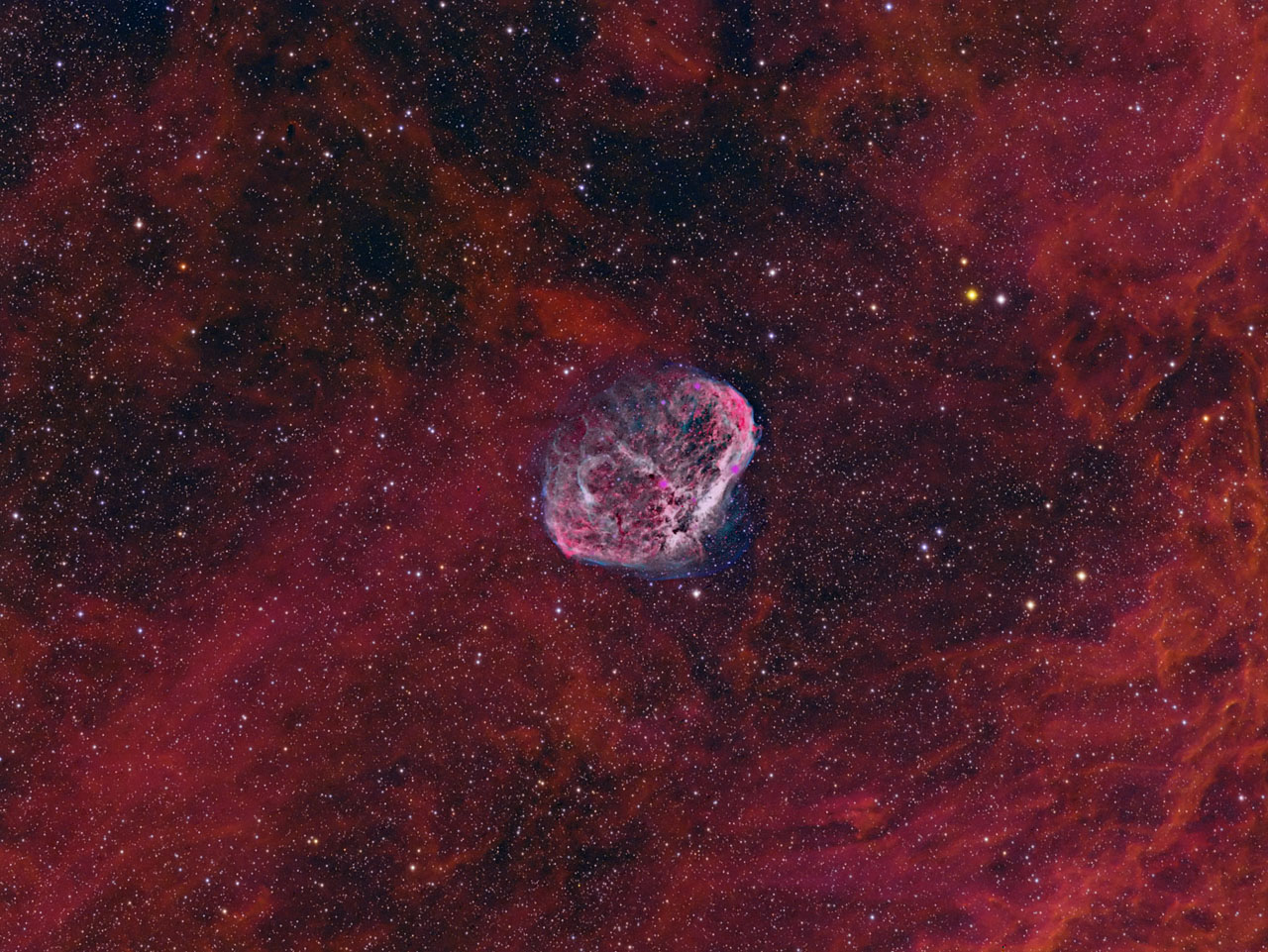Over the past week we’ve had some really great weather here in the Pacific Northwest, and I took advantage of the clear skies to start the astronomy season – with astro-photography, of course. There are some dark-sky star parties going on as a write this, and I didn’t go because there is too much work to do at home, but that didn’t keep me from opening up the observatory and starting some semi-automated captures.
The target this time was NGC6888, the Crescent Nebula. This is a popular target in the Cygnus constellation, and is often photographed, both in natural color (RGB) and with narrowband filters. As is usually the case, the scene is very much dominated by red hydrogen, and with RGB imaging there’s not much you can do about that. Narrowband images are typically captured with 3 filters; for hydrogen, oxygen, and sulfur. These separate images can be combined in many different ways to produce a color image (in most cases such images would be regarded as “false color”). When there is a significant amount of each element, this can produce a very colorful image. But in this case there is very little sulfur. An image made up of just hydrogen and oxygen is OK, and can even be made to look a lot like the natural colors of red and cyan. But I’ve done that before and seen it a thousand times, so I started experimenting with other ways of using the sulfur data to make the image more interesting.
I stumbled upon a pretty wild technique – one that is problematic and wouldn’t normally be used by most people, including me. It involves subtracting one image from another and using the result as one of the channels in the final RGB image – in this case, the green channel. Whenever you subtract images in this way you are likely to make the stars disappear, since they will be roughly the same in all channels. To avoid that, I limited this process to the central region of nebulosity – the crescent itself. There are some bright stars within the nebulosity and the process made them magenta, which is what you get if you subtract green from white light. I intend to go back and clean this up to restore the stars to more natural colors, but I liked the immediate result enough that I wanted to share it with you now.
This is a total of 12 hours of exposure, 6 for the hydrogen and 3 each for oxygen and sulfur. It was captured with an AT111EDT triplet refractor and QSI683 camera equipped with Astrodon 3nm filters. Most of the sub-exposures are fuzzy due to the bad seeing that is almost always present here, but I did get a few pretty good frames of hydrogen on the last night.
